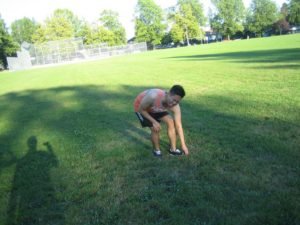A heel bone or calcaneus fracture is considered as a debilitating injury. This type of fracture most often occur during high-impact collisions such as falling from a height or a vehicular accident. Due to this, a calcaneus fracture is often severe and can result to long-term issues. To learn to recognize and manage bone injuries including fractures, register for first aid training here.
The calcaneus is one of the frequently injured tarsal bones. It is often damaged during high-impact collision in which other parts of the skeleton are also injured. It is important to note that injuries to the calcaneus often damage the subtalar joint and causes the joint to stiffen. This makes it hard for the individual to walk on uneven terrain or slanting surfaces.
Possible causes
The calcaneus can be damaged during a fall, vehicular accident or twisting injury. A twisting injury can cause the calcaneus to crack while a head-on vehicular collision can cause the bone to shatter.
The various causes can lead to similar fracture patterns. When an individual lands on the feet from a fall, the weight of the body is directed downward, thus driving the talus bone into the calcaneus.

What are the symptoms?
- Pain
- Swelling
- Bruising
- Heel deformity
- Inability to add weight on the heel or difficulty in walking
In minor cases, the pain is not enough to cause walking difficulties, but the individual can limp. While walking, the Achilles tendon acts via the calcaneus to carry the weight of the body. Once the calcaneus is distorted after an injury, the muscle and tendon could not produce enough power to support the weight, thus the ankle and foot are unstable which is why the individual walks differently.
Diagnosing a calcaneus fracture
The doctor will ask how the injury occurred as well as other injuries or health problems. After discussing the medical history and symptoms, the doctor will conduct a physical examination to check if there is a good blood supply to the foot and if the nerves are working properly. Other tests that will be used by the doctor to confirm a diagnosis includes an X-ray and CT scan.
Treatment
When planning the treatment, the doctor will take into consideration the following:
- Overall health of the individual
- Cause of the injury
- Extent of damage to the soft tissues
- Severity of the injury
Since most cases of calcaneus fractures will cause the bone to widen, the objective of treatment is to restore the normal anatomy of the heel. Generally, those who have restored heel structure have a better outcome. On the other hand, recreating the normal structure will surely involve surgery. Remember that surgery is linked to higher risk for complications.
Non-surgical treatment
In case the broken bones have not been displaced by the force during the injury, surgery is not required. The application of a cast or another form of immobilization can be used. This will keep the broken ends in the right position while they heal. During this period, the individual could not put any weight on the foot until the bone is fully healed which will take 6-8 weeks or even longer.
Surgical treatment
If the bones shifted out of place or displaced from the force during the injury, the doctor will surely recommend surgery.
